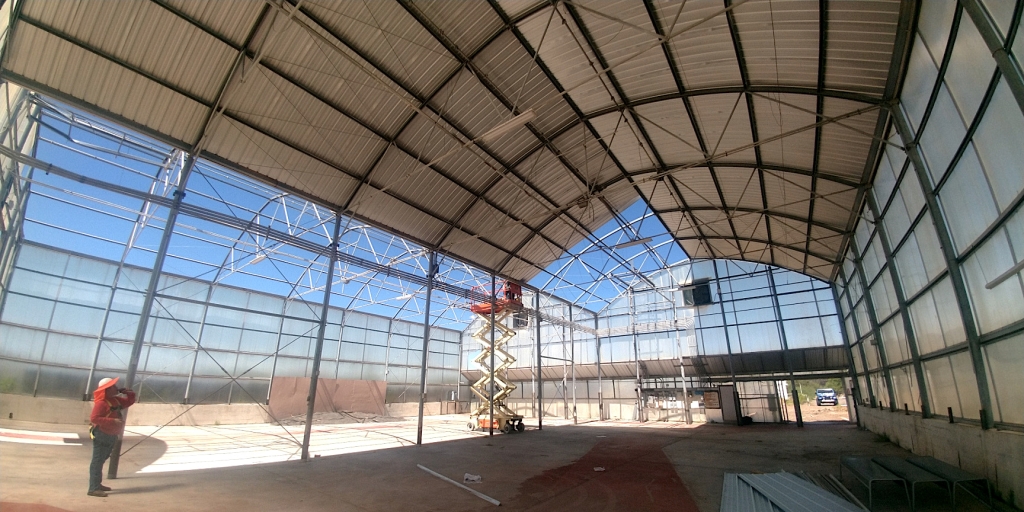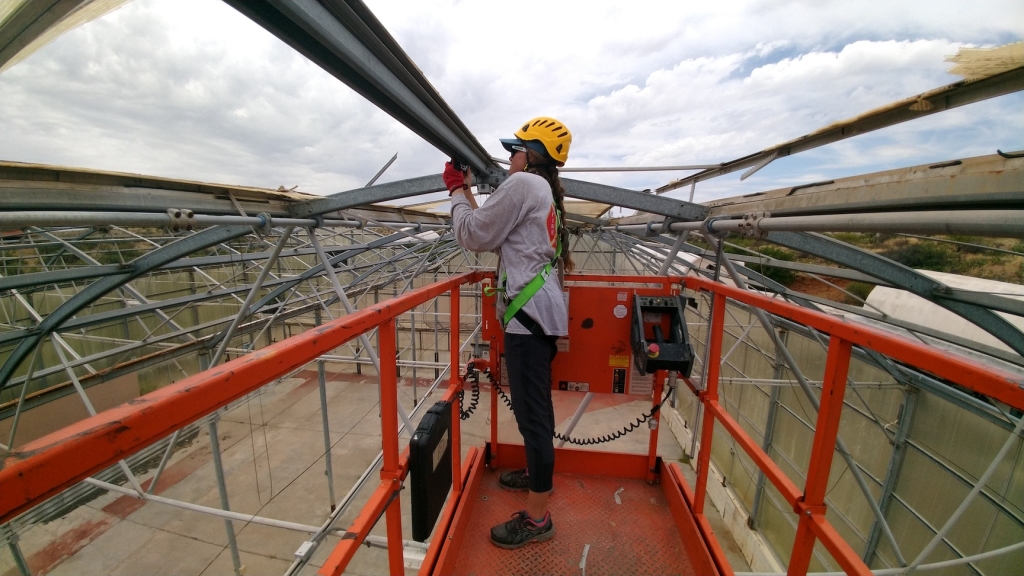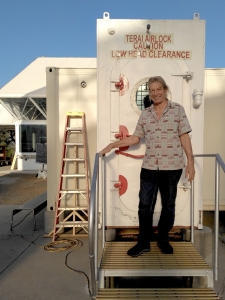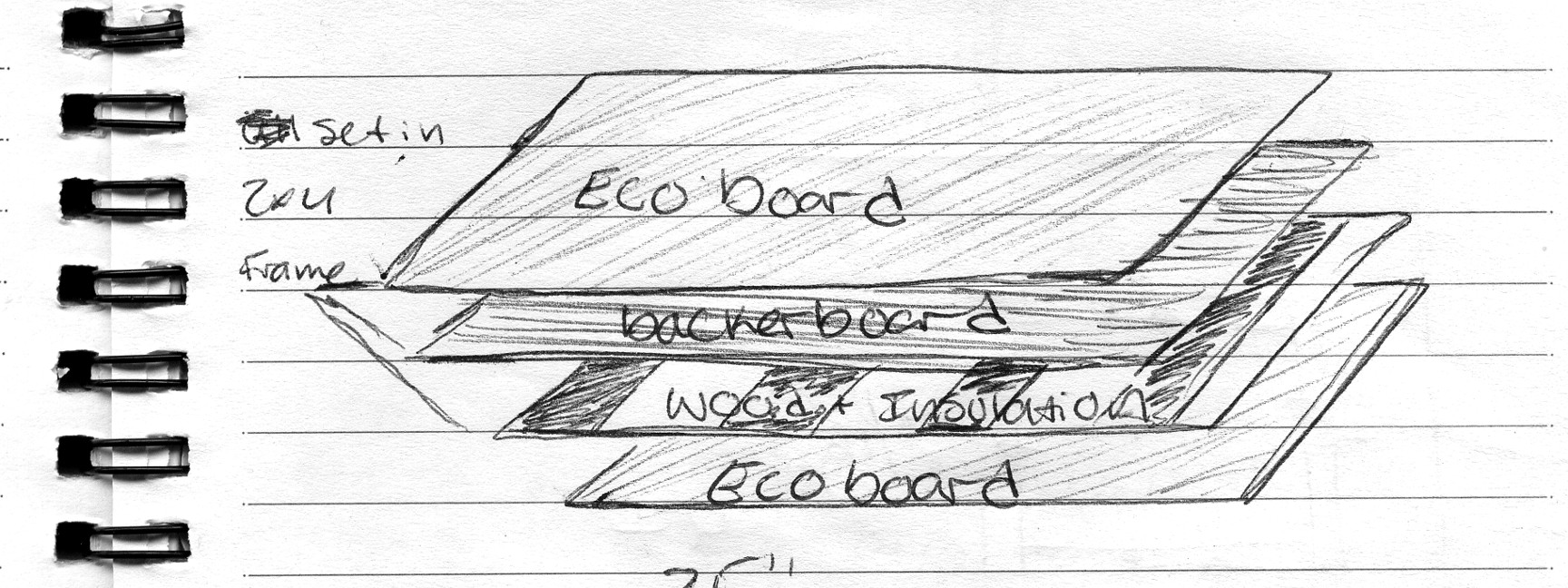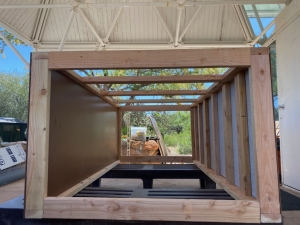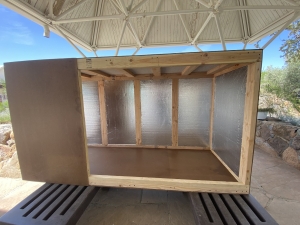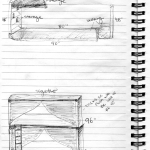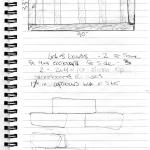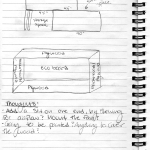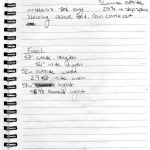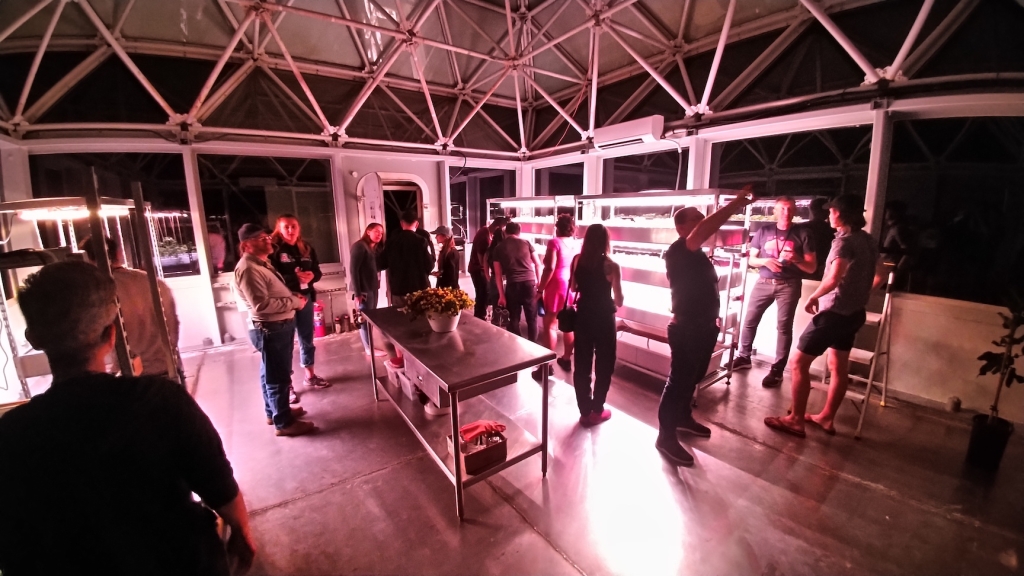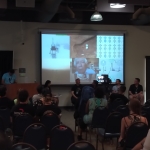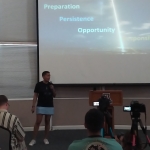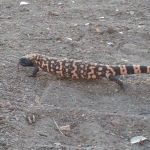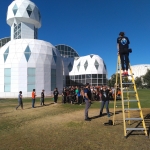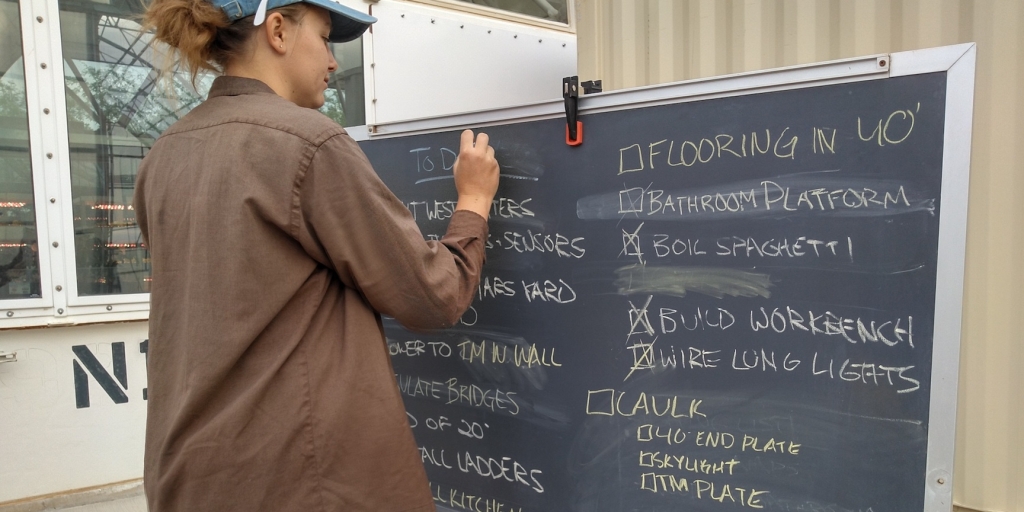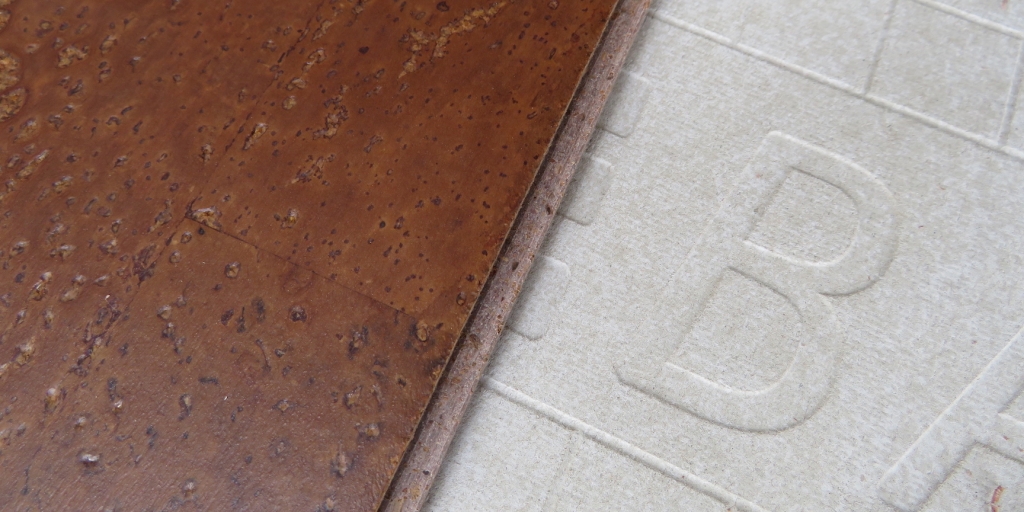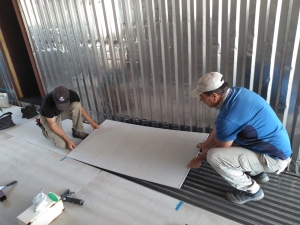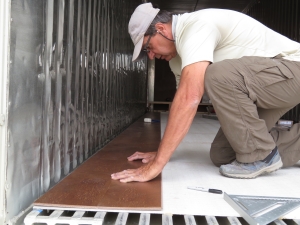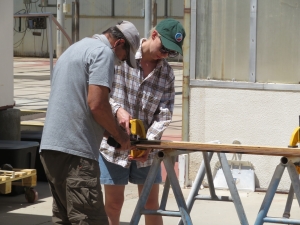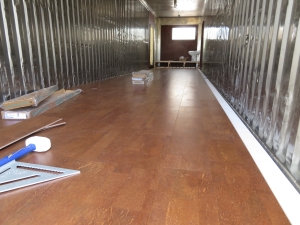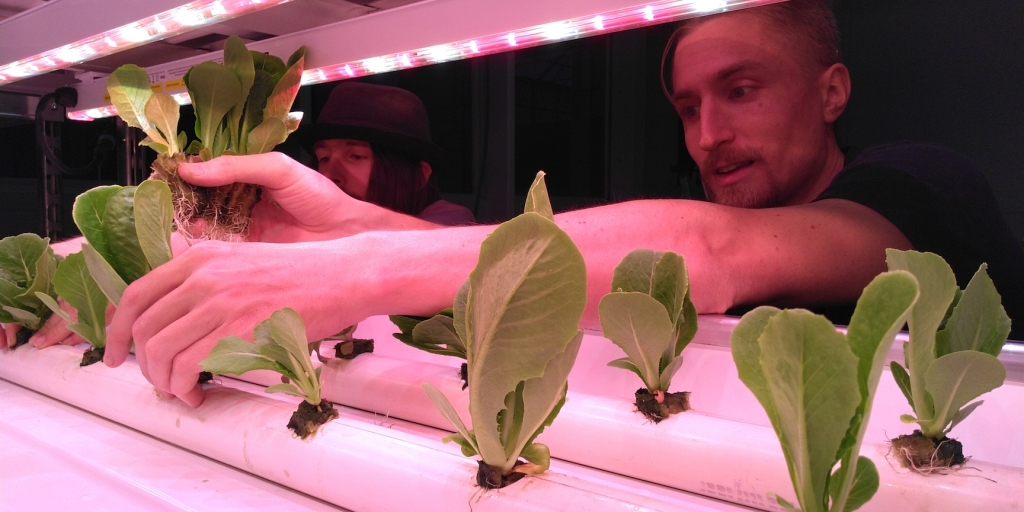Wrapping up for the summer
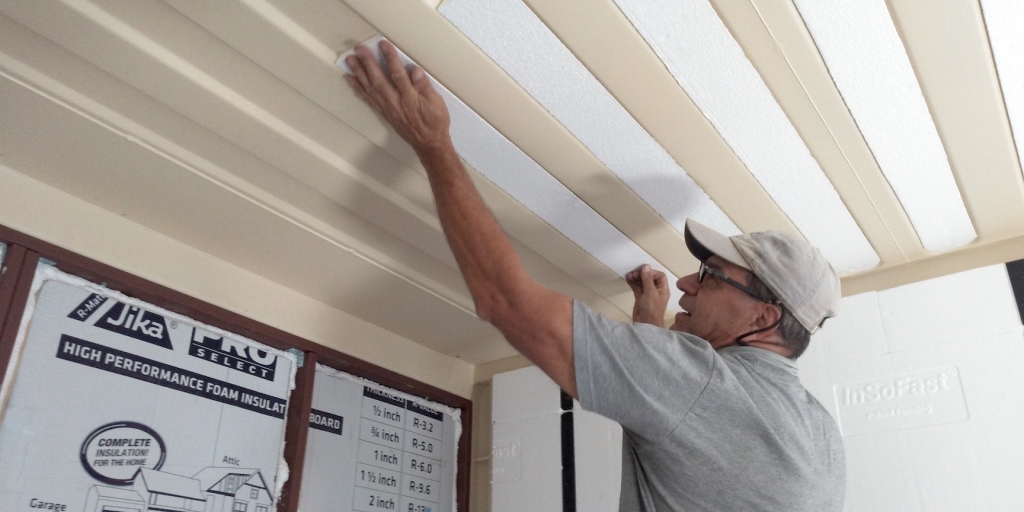
With the final three weeks of work at SAM, John Z., Luna, and Kai completed many small projects, wrapping up loose ends to the second, entering third phase of construction. Luna replaced more than 300 original nuts and washers that hold the sealed windows in place with stainless. The skylight mounted as the bathroom window was temporarily removed to apply a generous layer of Dow-Corning 795 silicone (the same used on the Test Module and Biosphere 2) and reset. The variety of tomatoes grown inside the Test Module for the Analog Astronaut Conference produced delicious fruit, were consumed, the plants composted. Several afternoons were spent loading aluminum stays and struts, scrap metal from the roof panel installation for delivery to the roll-off metal recycling bin behind the B2 Energy Center.
For a sum of three weeks John Z., Luna, Kai, and Sean insulated the 20 foot shipping container which will serve as the workshop for SAM. The panels were provided by InsoFast, a low VOC product specifically manufactured for a given shape of container (thank you Angus for the recommendation). While the installation video showed professionals completing a 20′ container in 12.5 minutes, we required something closer to 12.5 days (maybe a bit more). It’s tedious, exacting work but in the end, a good solution. The built-in “studs” provide support for 500 lbs and provide a high “R” value and moisture barrier of close-cell foam.
MrCool manufactures an innovative, do-it-yourself mini-split heat pump—an air conditioning unit with both the condenser and lines pre-pressurized with coolant. It really is quite clever and relatively simple to install, requiring only two crescent wrenches, two screw drivers, hole saw, PVC tape, and some careful planning. We probably spent as much time in measurements as in the actual hands-on effort, which paid off. Given that SAM is not your normal house, we were very careful to consider how we would maintain the hermetic seal given the need to cut a hole through the wall of the insulated 40 foot shipping container. Our solution was simple: we placed a patch of PVC tape over the hole which houses the pressurized lines and electrical line for the air handler, and cut an “X” incision to push each line through with minimal exposure. From the outside we re-filled the space between the interior stainless steel, and exterior aluminum skin with spray foam that pressed against the PVC tape, expanding to the outside again. Now, spray foam is bonded to spray foam in that insulated cavity and we hope, sealed. The outside of the hole is covered by a water tight electrical box leading to the insulated, pressurized coolant lines for maximum thermal retention.
For now, the unit runs off an extension cord (measured 7A, max 11A at 110V) and will be properly hard-wired once we run additional lines from the main feed. Within thirty minutes the Crew Quarters was a cool 78F compared to the 100F+ outside. It works! And we are set for the summer.


